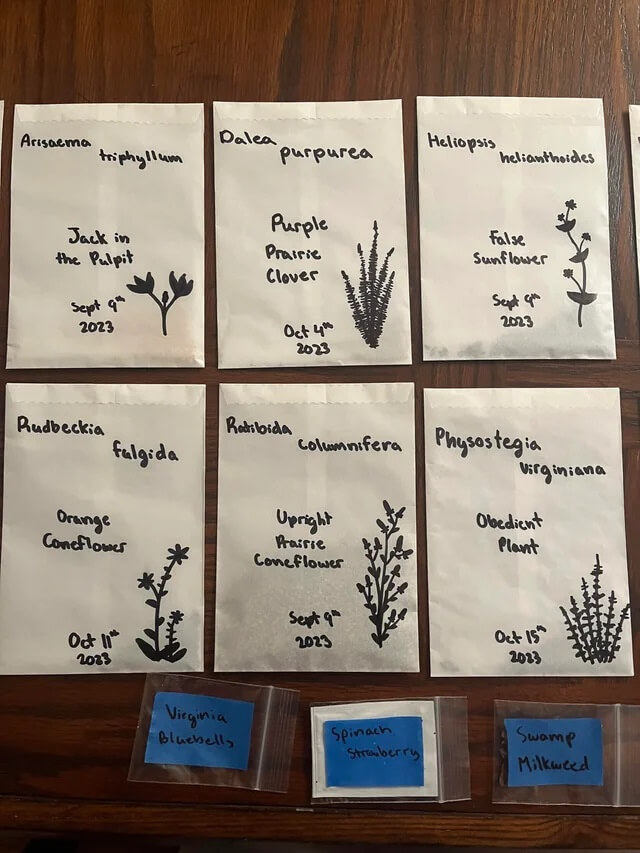Having a selection of seeds ready to be planted is an exciting time for anyone with a green thumb.
One Redditor uploaded photos of the varieties they were looking to plant in the winter, all neatly organized and with some in hand-made packages.
"Here's my collection of native and near native seeds," they captioned the post. "I'm going to winter sow most of these. The ones on the left are from prairie moon while the rest are gathered from the wild or from my garden."


Despite appearing to be more than prepared to get stuck into the dirt, this gardener still called out for some seed advice on the social media platform.
"Prairie moon has a very nice and easy guide but absolutely any extra help for growing and sowing these species would be appreciated," they said.
While many commenters were left impressed by the seed haul and the drawings on the packages, one Redditor jumped in to provide a warning.
"Be aware of double dormancy plants," they said. "Bellwort may be one. Native lupine was very [successful] with winter sowing, and this will be the third year so maybe they will bloom. Really pack down your dirt in your winter sowing containers because the most difficult part is the transfer to garden."
Double dormancy is when seeds need to get through two or more cold periods before they can germinate, and it's particularly common in seeds that are collected and stored.
According to the University of the District of Columbia, seeds with double dormancy need warm, moist conditions in order to break physical dormancy before stratification — or when placing seeds close together to encourage germination.
"Thanks, ya I heard about the double dormancy, I'll probably direct sow them in the ground some place safe and just hope," the original poster replied.
But if everything grows as it should, this gardener will have a fabulous garden full of native plants, which should be tolerant to most local weather conditions — aside from truly extreme ones — and should encourage biodiversity.
Moreover, since native plants do not require fertilizers and need fewer pesticides than traditional lawns, this gardener can avoid harmful chemicals that will damage their green space and harm local wildlife.
The reduced maintenance also means gardeners can save money, avoid excessive water use, and still have a thriving selection of plants.
Join our free newsletter for easy tips to save more, waste less, and help yourself while helping the planet.









